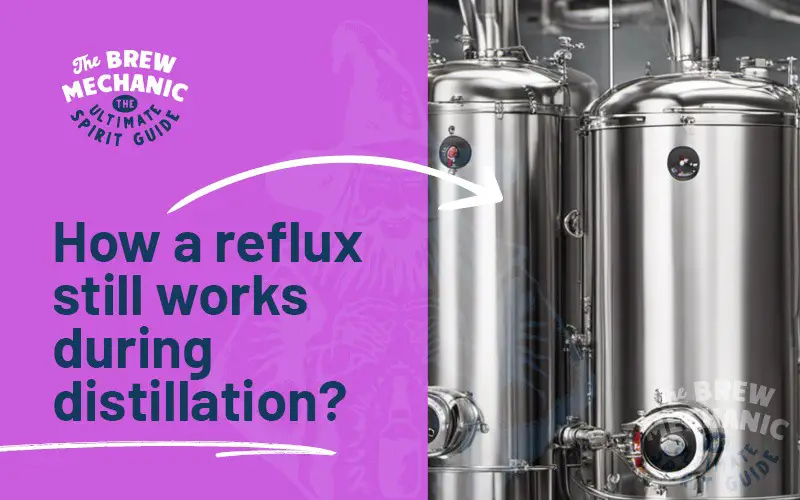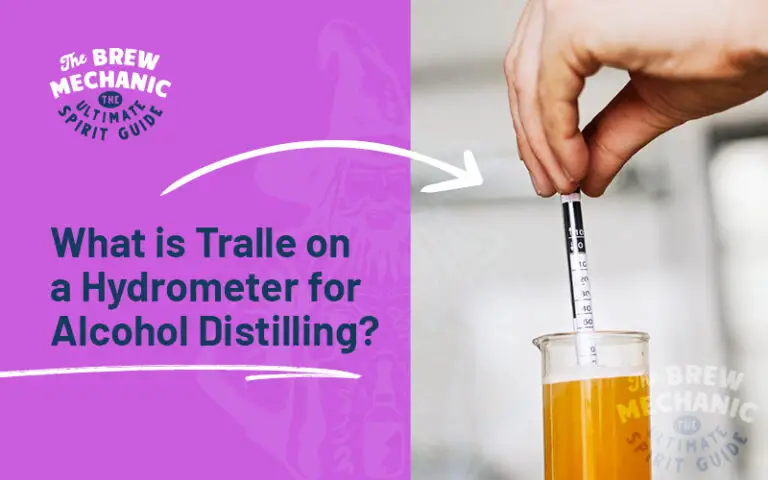How a reflux still works during distillation? Explain for a new home distiller!

Disclaimer: This post might include affiliate links, through which I may earn a small commission without any extra cost to you. Additionally, I am an Amazon Associate and earn from eligible purchases. All the products and services I suggest are ones I have personally used or would use. Thank you very much for your support if you decide to buy through any of my links!
Come join the Distilling Squad!
Get the best fundamental tips & tricks here. Woohoo!
We break down how a reflux still works for your distillation for sugar washes and exact the temperature boiling points for alcohol to be distilled. As a home distiller, we want to understand the fundamentals before going further. Reflux still is very different to a pot still.
So how does the reflux still work?
A reflux still uses fractional distillation to separate liquids based on their boiling points. It has a column with plates or packing material to enhance separation. The liquid mixture vaporizes, rises, and repeatedly condenses in the column. By controlling heat and reflux rate, you get a purified product with the desired purity.
What is the difference between a reflux still and a column still?
Temperature ranges for stripping the wash in the reflux still
| Acetone – Foreshots | 56.6°C or 133.8°F |
| Methanol – Foreshots | 64°C or 147.2°F |
| Ethyl Acetate – Heads | 77.1°C or 170.8°F |
| Ethanol Range – Hearts | 78.3 > 81.5°C or 172.9 > 178.7°F |
| 2 Proponal – Tails | 82°C or 179.6°F |
| 1 Proponal – Tails | 97°C or 206.6°F |
| Fuesel oils – Tails | 94 > 95°C or 201.2 > 203°F |
Download our Distilling Cuts Chart here
Yes I want this epic PDF plus get tips and tricks! You will be joining our distilling mail list. 🙂
The steps of a reflux still to work
A reflux still consists of a kettle, a column, and a reflux condenser, with a reflux condensation section located close to the upper part of the column.
There are four steps in this process to understand how a reflux still works
1. Separation through distillation
2. Repeated condensation and vaporization
3. Precise control
4. Collection of Desired Final Product
First step – Separation through Distillation:
Second step – Repeated Condensation and Vaporization (reflux):
Third step – Precise Control:
Fourth step – Collection of Desired Final Product

Download our Reflux still Cuts Chart
Yes I want this epic PDF plus get tips and tricks! You will be joining our distilling mail list. 🙂
Tip for distillation with reflux column:
Don’t be greedy and put tails into your heart’s portion as you can’t get it out and will contaminate your good stuff.
Once graded you can add the balance of the failed jars into the next distillation as there is alcohol in the jars.
how a reflux still works perfectly for a beginner
For a beginner, understanding how a reflux still works is the best home distiller wanting to make high proof alcohol and make many types of spirits with liquors from your local brewing store.
You will start with a sugar wash which has no methanol. Sidenote, it can’t be chemically produced due to having no pectins. We wish you the best of luck in your brewing journey.
Last Updated on Sep 14, 2023 by The Brew Mechanic
Disclosure: I may receive affiliate compensation for some of the links below at no cost to you if you decide to purchase a product or service. You can read our affiliate disclosure in our privacy policy. The information provided is for entertainment only.

With 35 years of knowledge of being a chemical engineer in alcohol manufacturing plants, my mission is to teach the next generation of home distilling alcohol brewers at a supernatural speed.
My reviews are based on real-life experiences with reflux stills, sugar wash, troubleshooting and mystical chemical reactions.
Download of Distilling Cuts Chart here
Yes I want this epic PDF plus get tips and tricks! You will be joining our brew journey mail list. 🙂







